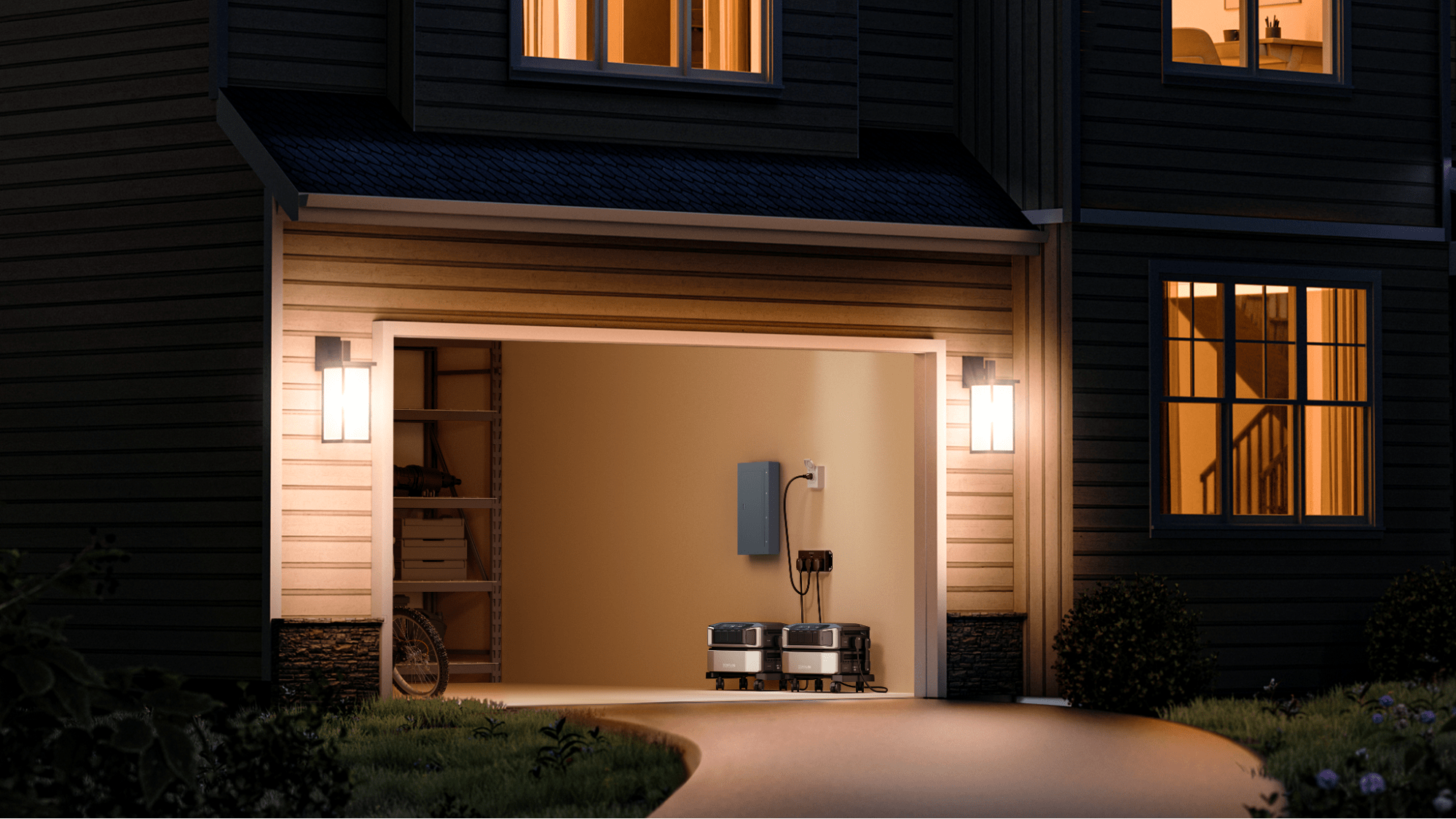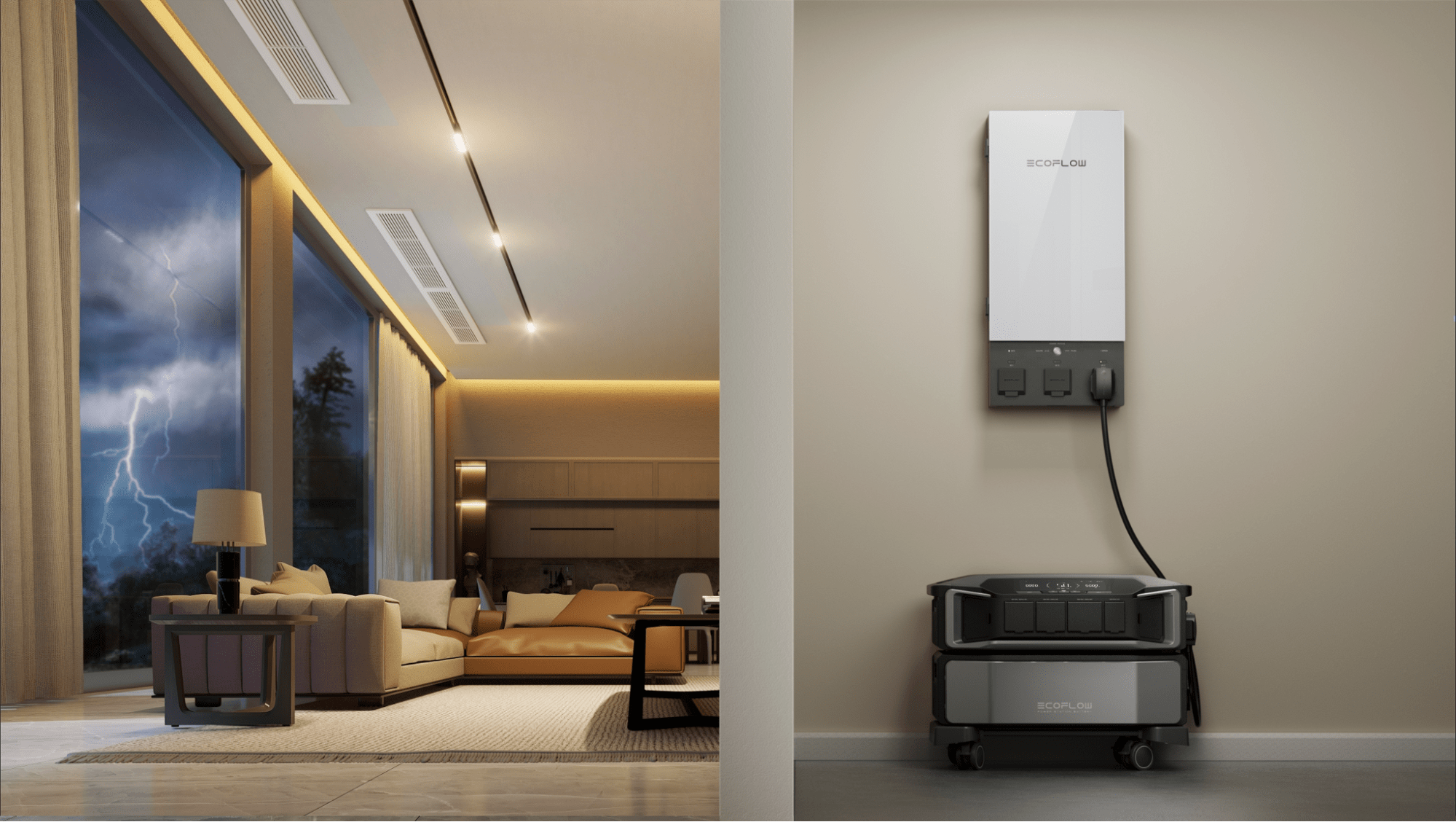How to Choose a Sump Pump Battery Backup
If your house has a basement and relies on a sump pump to prevent flooding and water damage, ice storms and snowmelt season can be an anxious time of year — particularly in Ontario and Quebec.
Multiple power outages have occurred already this winter, leaving hundreds of thousands of electricity customers in Montreal, Ottawa, and surrounding areas without power — sometimes for days or weeks.
In late March and early April, over 300,000 Hydro One customers experienced extended blackouts due primarily to ice storms and extreme weather causing downed trees and power lines.
Power outages can be life-threatening emergencies.
Even if you don’t rely on electricity for heat, extended outages put your home and family in danger.
Without reliable battery backup or generator power for your sump pump, the risk of extensive property damage is substantial — especially when ice and snow start to melt during an outage.
Unfortunately, winter and spring aren’t the only times of year many Canadians have to worry about sump pumps and power outages.
However, there are increasingly affordable ways to ensure your family and home are protected during even extended blackouts.
Read on to find out about home and sump pump battery backup.

What Is Sump Pump Battery Backup?
Sump pump battery backup is an affordable way to prevent basement flooding and water damage to your home during power outages.
Unlike portable generators, dedicated sump pump backups automatically switch to battery power from grid power instantaneously during a blackout.
Both pedestal and submersible sump pumps can operate using battery storage.
Unlike portable gas generators, sump pump battery backups are safe for indoor use and don’t need to be manually switched on during an outage.
In the past, when rechargeable battery storage was expensive and inefficient, a dedicated backup for your sump pump alone may have been the most affordable option to protect your home from devastating water damage.
In recent years, battery technology has improved immensely, with electric vehicles and renewable power systems fuelling innovation and driving down prices.
Today, a whole home backup battery is a viable option for running your sump pump and essential home appliances — even during extended outages.
Let’s take a look at each.
How Does a Sump Pump Battery Work?
Because dedicated sump pump batteries only provide power for a single electrical load, they are relatively simple systems with three main components.
Rechargeable battery: Typically flooded or sealed lead acid (SLA) “deep cycle” battery, though lithium-ion (Li-ion) batteries are becoming more common.
Inverter/Charger: Converts direct current (DC) electricity stored in the battery to alternating current (AC) for consumption by the sump pump as required. Dedicated DC sump pumps do not require DC-to-AC conversion to operate, only for the battery to charge using a household electrical outlet.
Controller: Your battery’s “brain,” the controller monitors AC output from the outlet the unit is plugged into and automatically switches to battery power during an outage. It also helps ensure that the battery charges optimally when not in use, helping increase lifespan and performance.
Most controllers will also alert you with an alarm tone when switching to backup power and when the battery is running low.
Think of dedicated battery backup as an uninterruptible power supply (UPS) for your sump pump, helping protect your home against water damage during an outage.

How Does a Portable Power Station Work with a Sump Pump?
A portable power station is a high-capacity rechargeable battery system capable of running or charging multiple appliances and devices simultaneously.
EcoFlow offers portable power stations for virtually any application, from camping to whole home standby generator backup.
For example, EcoFlow DELTA 3 Plus offers 1800W of AC output (3600W surge) which can easily start and run a sump pump and other essential appliances simultaneously.
Simply plug your sump pump into the AC or DC outlet on the DELTA 3 and plug the portable power station into the nearest wall outlet.
Like a dedicated battery, the DELTA 3 Plus will kick in immediately during a blackout.
The difference is, you can also plug in other nearby appliances — a freezer for example — to provide backup for more than just your pump during an outage.
DELTA 3 Plus comes with 1024Wh of storage capacity, expandable up to 5kWh.
If you have a ⅓ horsepower (HP) sump pump that consumes 400 watts of operating power (1200W surge), a fully expanded 5kWh DELTA 3 Plus can run the unit for approximately 10-12 hours between charges.

Battery Backup vs. Generators for Sump Pumps
If you live in a location that’s prone to power outages, you may be considering investing in a generator to operate your sump pump and other essential home appliances.
Portable gas generators are rarely a better choice than battery backup for sump pumps for the following reasons.
Manual setup, fueling, and starting during an outage. When it comes to water damage and floods, every second counts
Must be operated outdoors at least 20 feet away from the nearest entrance or window to your house. Carbon monoxide emissions from gas and other fossil fuels can kill within minutes
Noise levels between 80dB to 100dB
Fuel storage is hazardous. Gasoline spoils within a few months.
Increased carbon footprint
However, standby generators like EcoFlow DELTA Pro Ultra are ideal for running your sump pump and other high-wattage appliances — even during extended power outages.
By integrating a whole home generator with your home circuit board and wiring using Smart Home Panel 2 or an automatic transfer switch, you get virtually uninterrupted access to power during a blackout with switchover time of 20 milliseconds (20mS).
Unlike conventional standby generators, EcoFlow DELTA Series Generators offer multiple charging methods, including solar panels, grid power, 800W alternator adapter (cars/trucks/RVs), and gas, propane, and inverter generators.

EcoFlow DELTA Pro 3 has 7 charging and 15 fast-multicharging options to help power your home — and your sump pump — indefinitely during a power outage.

How to Choose a Sump Pump Battery Backup
Choosing the right sump pump battery for your needs requires some math, particularly if you’re retrofitting backup storage for your existing AC pedestal or submersible system.
First of all, you need to understand the difference between starting and running watts.
Many high-wattage home appliances require significantly power to start than to run — particularly anything requiring an engine or compressor, such as refrigerators, air conditioners, and sump pumps.
Average Starting and Running Watts of Household Sump Pumps
| Horsepower (HP) | Average Running Watts (W) | Average Starting Watts (W) |
|---|---|---|
| 1/4 HP | 300W | 800W |
| 1/3 HP | 400W | 1200W |
| 1/2 HP | 800W | 1800W |
| 3/4 HP | 1000W | 2500W |
| 1 HP | 1300W | 3500W |
Most appliances list their operating (running) wattage on manufacturer’s labels and manuals because starting watts are rarely an issue when they’re plugged into grid power.
No matter what kind of backup battery system you choose, make sure it outputs sufficient starting and running watts for your sump pump. Otherwise, it won’t start up.
You’ll also need to decide how many hours you want your sump pump to operate off-grid between charges.
Take the operating wattage and multiply it by the number of hours you need for backup.
For example, to run a 400W sump pump for a full day off-grid requires a minimum storage capacity of at least 10kWh, though it’s wise to increase that estimate by at least 10%-20% to give you some overhead for system inefficiency, etc.
Formula: Operating Wattage (400W) x Hours Between Charges (24) = 9600Wh

Frequently Asked Questions
How Do You Install a Backup Battery for a Sump Pump?
Sump pump backup battery installation can be as simple plug-and-play or require a licensed electrician. Ease of installation depends largely on whether you’re retrofitting an existing pedestal/submersible sump pump or putting in a dedicated DC-to-DC system. Portable power stations with sufficient AC output and battery storage can be a plug-and-play retrofit solution. No matter what, keep the battery dry!
How Long Does a Sump Pump Battery Run?
The length of time a sump pump battery will run during a blackout is determined by the power requirements of your pump (operating watts) and the energy storage capacity of the battery in watt-hours (Wh)/kilowatt-hours (kWh). To estimate runtime during an outage, divide the storage capacity of the battery by the sump pump operating wattage. Then multiply the outcome by .8 (80%) to account for system inefficiency of 20%.
Final Thoughts
Extreme weather and power outages are a fact of life in many parts of the country — particularly Ontario and Quebec.
Given the likelihood of power outages occurring simultaneously with environmental conditions that lead to water damage or basement flooding, sump pump battery backup is a wise investment.
Thanks to the increased affordability of portable power stations and whole home backup generators like EcoFlow DELTA Pro 3, you can keep essential appliances running along with your sump pump without breaking the bank.
EcoFlow has a wide variety of off-grid and hybrid battery backup and solar generator solutions for just about any application.
Check out our selection today!